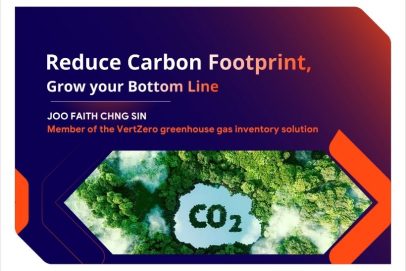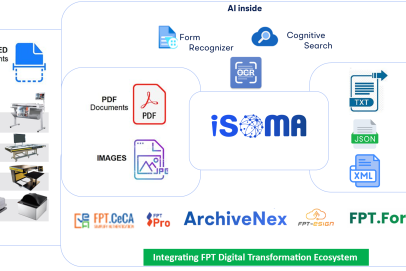Carbon Accounting – What is Carbon Accounting?
The term, carbon accounting, emerged in the early 2000s, coinciding with the rise in popularity of the carbon footprint concept, which was made popular by a British Petroleum advertising campaign in 2005. Carbon accounting soon became a standard way for businesses to measure their ecological impact.
For instance, in 2012, the UK coalition government introduced mandatory carbon reporting, requiring around 1,100 of the UK’s largest listed companies to report their annual greenhouse gas emissions.
Climate change is an urgent global threat to human life and human development. It is the duty of every nation and every person to reduce greenhouse gas emissions and participate in the fight against climate change. In the race towards reducing global carbon emissions, carbon accounting enables us to determine whether existing emissions from manufacturing activities satisfy regulatory requirements. Additionally, this is a crucial first step in reaching the Net-zero target by 2050.
1. What is carbon accounting?
Carbon Accounting, also known as Greenhouse Gas Accounting, is a process to determine and report the amount of Greenhouse Gas (GHG) emissions of a project, business activity, enterprise, or even a nation.
The GRI 305 standard belongs to the “GRI Consolidated Sustainability Reporting Standards”, guiding the measurement of total greenhouse gas emissions at businesses in 3 scopes, including direct emissions (scope 1), indirect emissions from purchased electricity (scope 2) and all the indirect emissions that occur in the value chain (scope 3). Carbon accounting includes identifying and measuring all sources of GHG emissions within the aforementioned three scopes.
2. To whom might carbon accounting be of interest?
Governments, corporates and individuals can leverage carbon accounting to measure the quantity of greenhouse gases they produce. Carbon footprint is the amount of greenhouse gas emissions generated by humans during their production, consumption, and living. It includes emissions that come from human activity directly as well as emissions that come from human activity affecting the production and consumption of others. Carbon accounting implementation will benefit:
- Government:
- Track the nation’s overall and corporates’ specific progress toward implementing their climate change commitments.
- Identify the major sources of GHG emissions and establish policies, taxes, fees and emission reduction measures
- Corporate:
- Improve energy and resource efficiency
- Optimize operating costs
- Enhance competitive advantages
- Minimize legal risks and related costs
- Individual:
- Increase the awareness of the GHG’s impact on the environment
- Seek methods to lower GHG emissions
Why is carbon accounting especially important?
Employing carbon accounting allows businesses to:
- Accurately acknowledge the environmental impacts: Carbon accounting provides a comprehensive overview of an organization’s total greenhouse gas emissions, helping them understand the current situation to set goals and strategies to reduce emissions.
- Set emissions reduction targets: Carbon accounting serves as the foundation for building science-based emission reduction targets to reduce emissions in a reasonable manner in line with the Paris Agreement on Climate Change commitments signed in 2015.
- Monitor and evaluate progress: Businesses are able to track and evaluate their progress toward emissions reduction targets with carbon accounting, which enables them to modify their plan as needed.
- Enhance transparency, obligations and responsibilities: Carbon accounting promotes transparency by providing environmental performance information, helping build trust with stakeholders including shareholders, banks, and governments.
- Reduce financial and legal risks: Carbon accounting helps businesses mitigate financial risks associated with climate change, including carbon pricing and regulatory changes. Having an emission reduction plan helps businesses benefit from reducing costs, taxes, and ever-changing environmental protection legislation.
- Benefit from investors, banks, customers and other stakeholders: According to recent scientific studies, environmentally friendly businesses will greatly benefit from stakeholders including lower debt costs from green bonds, easier capital mobilization from shareholders, and more revenue from customers who are becoming more environmentally conscious.
3. When should businesses start reporting emissions?
At the 2021 United Nations Climate Conference (COP 26), Vietnam committed to achieving carbon neutrality (Net-zero) by 2050. This is a huge commitment that calls for the cooperation of all members of society, including the government, corporations, and individuals.
Simultaneously, Decision No. 01/2022/QĐ-TTg issued on January 18, 2022 promulgated the list of greenhouse gas emissions sectors and facilities required to implement. In addition, on November 15, 2022, the Ministry of Natural Resources and Environment issued Circular No. 17/2022/TT-BTNMT regulating measurement, reporting, appraisal techniques for greenhouse gas emission mitigation and gas inventory in the waste management sector.
Vietnam’s plan for greenhouse gas reporting is therefore as follows:
- 2023:
- Facilities provide data and information needed to develop greenhouse gas inventory plans.
- Create a grassroots plan for greenhouse gas inventory.
- 2024:
- Grassroots greenhouse gas inventory.
- Create a grassroots report for greenhouse gas inventory.
- 2025:
- Complete the grassroots report on greenhouse gas inventory results.
- Approve the plan to reduce greenhouse gas emissions for the period 2026-2030.
- 2026-2030 period:
- Implement the plan to reduce greenhouse gas emissions.
- Trade carbon credits.
Based on the above legal documents, at least 3,000 businesses, units and organizations in Vietnam must include carbon accounting in their annual reports on greenhouse gas inventories. Business owners must take prompt action on this urgent duty to prevent legal and financial risks.
4. Which fields require implementing carbon accounting/Greenhouse gas inventory?
The establishments in the following six industries are required by law to conduct greenhouse gas inventories:
- Energy:
- Energy production industry
- Energy consumption in industry, commerce, services and civil areas
- Mine natural gas, coal, and oil
- Transportation:
- Energy consumption in transportation
- Construction:
- Energy consumption in the construction industry
- Industrial processes in the production of construction materials
- Industrial processes:
- Chemical production
- Metallurgical
- Electronic industry
- Use of substitute products for ozone-depleting substances
- Production and use of other industrial products
- Agriculture, forestry, land use:
- Livestock production
- Forestry and land use change
- Crop production
- Energy consumption in agriculture, forestry and fisheries
- Other agricultural sources of emissions
- Waste:
- Solid waste landfill
- Treatment of solid waste using biological methods
- Incineration and open burning of waste
- Wastewater treatment and discharge
5. Which businesses are required to perform carbon accounting to report greenhouse gas inventory?
Facilities with greenhouse gas emissions of at least 3,000 tons of CO2 equivalent or fitting into one of the following cases
Thermal power plants and industrial production facilities have a total annual greenhouse gas emission of more than 1,000 tons of oil – oil equivalent). For example: A 1,000 MW thermal power plant burns coal to generate electricity. This plant burns roughly 2 million tons of coal every year, emitting about 20 million tons of CO2 equivalent into the environment.
Freight transport companies with total annual fuel consumption of 1,000 TOE or more. For example: A freight transport company has a fleet of 100 trucks, consuming about 100,000 liters of oil per year on each truck. This means that the company uses roughly 10 million liters of oil annually, or 10,000 TOE.
For commercial buildings with total annual energy consumption of 1,000 TOE or more. For example: A commercial building has an area of 50,000 m2, using electricity for lighting, air conditioning, etc. Each year, this building consumes roughly 10 million kWh of electricity, equivalent to 10,000 TOE.
Solid waste treatment facilities have an annual operating capacity of 65,000 tons or more. For example: A solid waste treatment facility have an annual operating capacity of 100,000 tons. During processing, this facility emits about 1 million tons of CO2 equivalent into the environment.
A greenhouse gas inventory is required to determine the level of greenhouse gas emissions of the organizations. Organizations can then create plans to reduce greenhouse gas emissions to combat climate change and protect the environment.
6. Methods of implementing carbon accounting
The GHG Protocol Corporate Standard and Corporate Value Chain Standard are a set of global rules used to measure and report corporate GHG emissions. These standards ensure that GHG reports are accurate, fair and consistent.
There are currently 05 (five) main carbon accounting methods according to GHG Protocol standards as follows:
- Physical-unit method: Calculates GHG emissions based on the number of physical units a company consumes or uses (e.g. electricity in kWh, gasoline in litres)
- Spend-based method: Calculates GHG emissions based on the financial value of a purchased good or service (e.g.: total value in Vietnam Dong paid for IT hardware), then multiplies it by a relevant emissions factor.
- Supplier-specific method: Collects product-level cradle-to-gate GHG inventory data (i.e. from the raw materials extraction until it reaches the consumers) from suppliers of the companies. This is the most accurate but also the most time and resource-intensive method.
- Average-data method: Estimates emissions by collecting data on the mass or other relevant units for the emissions category, and multiplies this by the relevant industry average emission factors (e.g. average emissions per unit of good or service).
- Hybrid-method: Combines different methods such as mixing the physical-unit and supplier-specific methods.
Multiple factors determine whether a carbon accounting approach is appropriate, including:
- Data availability: Some methods require more data than others. For example: Your business uses a third-party shipping service. That vendor, on the other hand, is quite old-fashioned and does not have data stored on the cloud from which you may access it at any time. Therefore, carbon accounting methods will have to change to accommodate available data.
- The importance of accuracy: Depending on the level of data accuracy required, your business needs to apply different carbon accounting methods. Companies with export transactions to Europe or those listed on the stock exchange, for example, will require a higher standard of accuracy than small businesses.
- Available resources: Some methods take more time and resources than others. Resources might be people, expertise, time and systems.
7. Report your emissions inventory to us
FPT Green Transformation’s carbonaccounting platform for reporting emissions reductions and ESG complies to the internationally recognized GHG Protocol Corporate Standard and the latest regulations of the Vietnamese Government. The software collects the necessary company data on all relevant emission ranges (scopes 1, 2 and 3) of the business and combines them with the corresponding ratios. The platform then estimates emissions and tracks them over time to visualize progress.
In compliance with the Paris Agreement on climate change, FPT Green Transformation assists organizations in setting net-zero targets in addition to providing a visual representation of existing emissions and carbon footprints. We also help businesses achieve these goals through emissions reduction solutions and activities, as well as a network of service providers and sustainability experts. These activities are implemented in accordance with a business’ emissions profile and directly address the indicators with the greatest potential for reduction.
Sign up for a free demo with FPT Green Transformation right now if your business is ready to become a leader in sustainability and start the journey towards net-zero. Your company can achieve full carbon accounting potential and reduce emissions in all three scopes with the assistance of the FPT Green Transformation platform.
Exclusive article by FPT IS Technology Expert
Pham Tuan
VertZero Product Manager
FPT Information System Company.
















